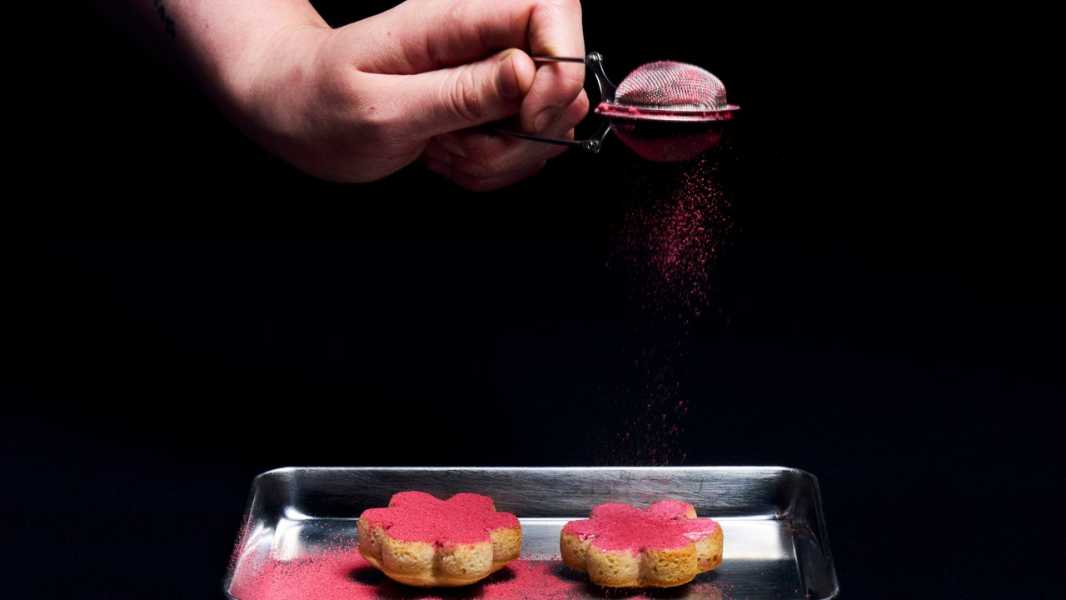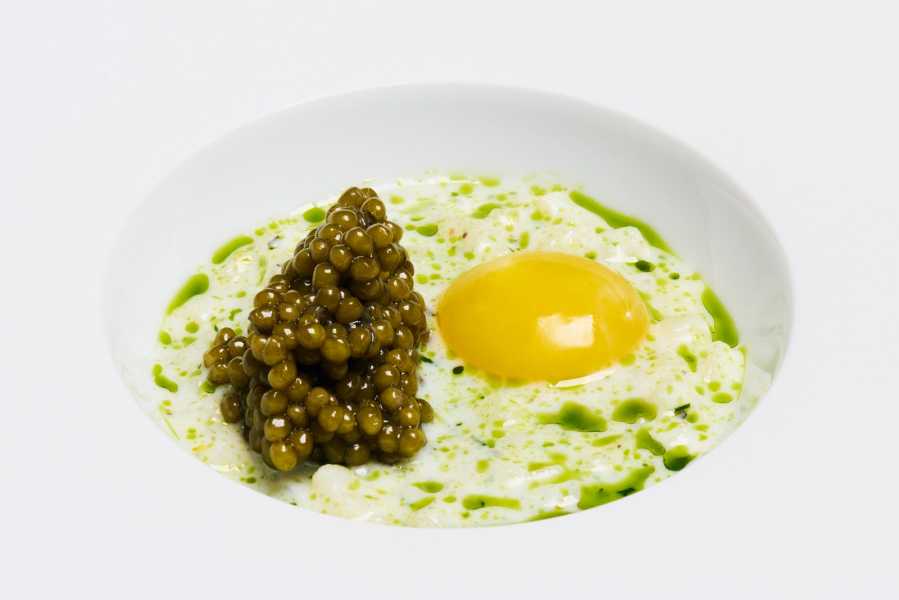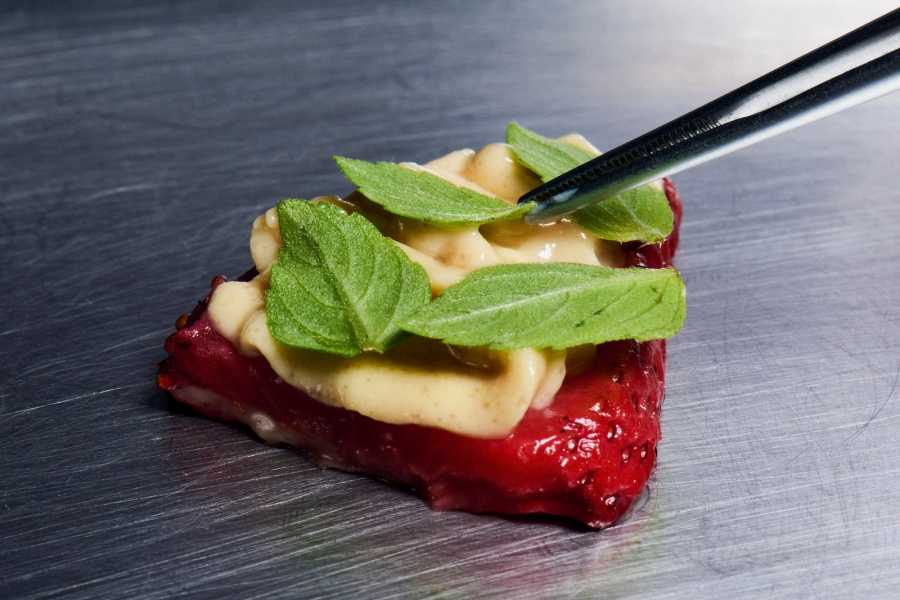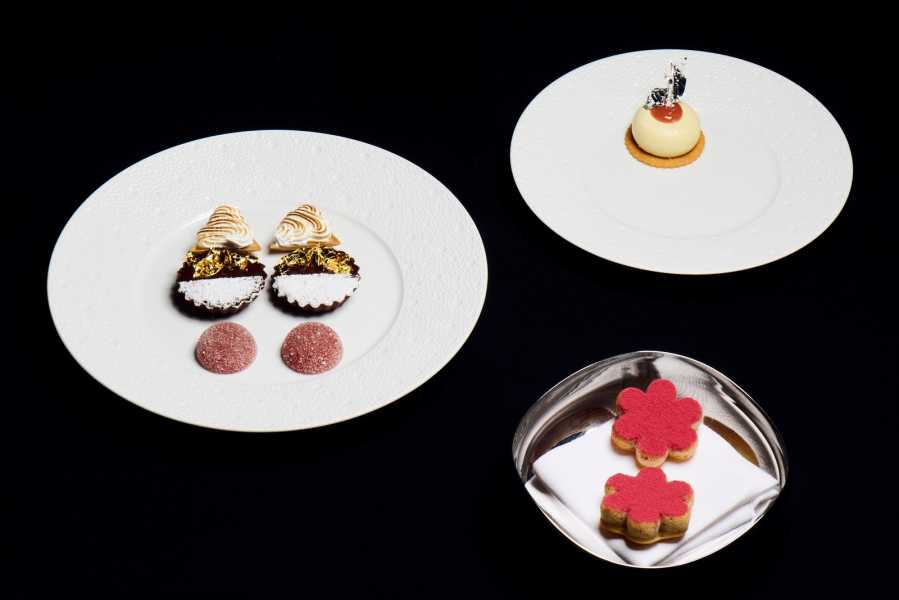
Save this storySave this storySave this storySave this storyYou’re reading the Food Scene newsletter, Helen Rosner’s guide to what, where, and how to eat. Sign up to receive it in your in-box.
There’s a lot to be said for meals that are merely excellent. To be theatrical, to be subversive, to be paradigm-smashing—these are admirable qualities in a restaurant, bien sûr, but there is only so much of one’s face that can be melted, especially over dinner. When it’s a matter of dropping a large quantity of money on a very special meal, sometimes you just want something that’s wonderful, that’s all, the end. Clover Hill, a tiny restaurant tucked discreetly into an impossibly charming cobblestoned block in Brooklyn Heights, feels like a secret—such a lovely room, such finesse in the kitchen, such polished romanticism in the service. It’s the sort of place you want to tell your friends about, but only in person, and not everyone—just the folks who deserve nice things. It seems almost a shame for word to get out.

A mound of caviar tops an ultra-refined take on potato and egg.
Clover Hill opened in 2019, replacing a longtime neighborhood favorite, Iris Cafe. It operated for only a few months before the pandemic forced it to shutter. When it reopened, in 2022, the owners, Clay Castillo and Gabriel Merino, brought in the chef Charlie Mitchell to run the kitchen, and initially did only a high-end brunch. Mitchell, who’d been a cook at Clover Hill in its opening months, was a veteran of technique-oriented restaurants such as Betony and Eleven Madison Park. Not long after his return, Clover Hill phased out daytime service to focus on an evening tasting menu. The investment paid off quickly, at least in terms of accolades: less than a year after débuting its dinner program, the restaurant was awarded a Michelin star, making Mitchell the first Black chef in the city ever to receive one. Earlier this year, he was named Best Chef in New York by the James Beard Foundation. Still, for some reason, it’s oddly easy to get a table at Clover Hill.

The tiny storefront space is tucked discreetly on a cobblestoned block in Brooklyn Heights.

A slice of strawberry topped with foie-gras mousse is served alongside duck breast.
There is a bit of quiet drama in a meal here. Cocktails, assembled at a tiny prep bar, are poured tableside from diminutive glass bottles; dinner begins with a fusillade of delightfully fussy small bites—tartlets, amuses, little arrangements of luxurious thises and thats. After a procession of seafood and meat courses (the restaurant does not accommodate vegetarians), the micro-bombardment format returns at the end with a round of sweets, including a delicate raspberry entremets the precise shape and color of Michelin’s six-pointed asterisk. But for the most part a meal at Clover Hill is straightforward: a course arrives, a server briefly describes it, and then you’re left to eat. The kitchen is open, but there’s no traditional counter seating. Flavors are thoughtfully harmonic—sweet Hokkaido scallop playing coyly off the brine of salmon roe and the silken sourness of uni—but there’s no personal storytelling, no running narrative put forth about “Chef” and his thoughts and dreams. Earlier this year, Mitchell wrote a weeklong food diary for the Grub Street Diet, and I was struck by the spartan habits he described: bodega coffees, grocery-store sushi. He seems to have little interest in the idea that he, a high-profile chef, should be just as much of a draw as his food.
Helen, Help Me!
E-mail your questions about dining, eating, and anything food-related, and Helen may respond in a future newsletter.
The food that Mitchell prepares at Clover Hill has the subtlety and precision of any Manhattan-billionaire canteen. A course of rare shima aji garnished with fragrant nasturtium leaves and plum sorrel recalled something from Le Bernardin; the sweet flesh of the fish had been ingeniously minced to a caviar fineness without losing its firm texture. A white lobe of samegawa karei, a Japanese flounder, miso-cured and served over a green pool of fava beans and herb oil, could have emerged from the kitchen at Daniel. The bill at the end of the evening would fit in over there as well: the dinner costs three hundred and five dollars per person. All told, with drinks and tax and, what the hell, throw in an uni supplement, you’re easily spending a thousand dollars on dinner for two.

The tasting menu begins and ends with a fusillade of small bites.
The surprise of Clover Hill is not that this sort of food is on offer in an outer borough—with its concentration of zillion-dollar brownstones and fancy-pants residents, Brooklyn Heights isn’t exactly salt of the earth. What’s more unusual is for cooking of this rarefied sort to be happening in a thimble-sized, tin-ceilinged storefront on a residential street, with minimal pomp. The walls are whitewashed brick. A high shelf wrapping the walls holds books and greenery. A pair of roller skates are tacked to the wall. Service is polished but to the point. The restaurant, in other words, is the emotional and architectural opposite of those grand dining rooms in Manhattan which are designed as cathedrals to the egos of their diners (and, of course, of their chefs). Clover Hill isn’t scrappy: this is a restaurant doing exactly what it means to be doing. But the scale of the place seems almost ostentatiously humble given Mitchell’s focussed execution. The restaurant trades in an opulence of intimacy rather than of power, which—given the price tag on a meal here—can feel a little jarring. In the candle glow of evening, the brass fittings of the open kitchen gleam like gold. But then you step out onto the street, into the glare of street lamps and headlights, and it was just dinner: excellent, extremely expensive, over now. ♦
Sourse: newyorker.com






